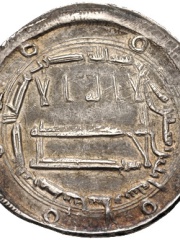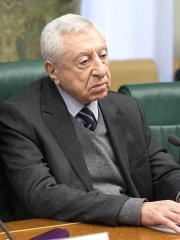RELIGIOUS FIGURE
Balak

 Balak
Balak
Balak (Hebrew: בָּלָק Bālāq) was a king of Moab described in the Book of Numbers in the Hebrew Bible, where his dealings with the prophet and Midianite sorcerer Balaam are recounted. Balak tried to engage Balaam for the purpose of cursing the migrating Israelites. The story of Balak is detailed in Numbers 22–24, Judges 11:25, and Micah 6:5. According to Numbers 22:2, and Joshua 24:9, Balak was the son of Zippor. Read more on Wikipedia
His biography is available in 25 different languages on Wikipedia (up from 24 in 2024). Balak is the 1,302nd most popular religious figure (down from 1,079th in 2024), the 12th most popular biography from Jordan and the 4th most popular Jordanian Religious Figure.
Memorability Metrics
Page views of Balak by language
Among RELIGIOUS FIGURES
Among religious figures, Balak ranks 1,302 out of 3,187. Before him are Merytre-Hatshepsut, Balthasar Hubmaier, Wasil ibn Ata, Umm Ayman, Marcabru, and André Vingt-Trois. After him are Piero Marini, Madeleine Sophie Barat, Hafiz Saeed, Raymond Nonnatus, Phinehas, and Anuruddha.
Most Popular Religious Figures in Wikipedia
Go to all RankingsMerytre-Hatshepsut
1500 BC - 1425 BC
HPI: 64.53
Rank: 1,296
Balthasar Hubmaier
1485 - 1528
HPI: 64.51
Rank: 1,297
Wasil ibn Ata
700 - 748
HPI: 64.50
Rank: 1,298
Umm Ayman
HPI: 64.49
Rank: 1,299
Marcabru
1200 - 1150
HPI: 64.48
Rank: 1,300
André Vingt-Trois
1942 - 2025
HPI: 64.48
Rank: 1,301
Balak
HPI: 64.48
Rank: 1,302
Piero Marini
1942 - Present
HPI: 64.48
Rank: 1,303
Madeleine Sophie Barat
1779 - 1865
HPI: 64.48
Rank: 1,304
Hafiz Saeed
1950 - Present
HPI: 64.47
Rank: 1,305
Raymond Nonnatus
1204 - 1240
HPI: 64.46
Rank: 1,306
Phinehas
1300 BC - Present
HPI: 64.45
Rank: 1,307
Anuruddha
450 BC - Present
HPI: 64.45
Rank: 1,308
In Jordan
Among people born in Jordan, Balak ranks 12 out of 59. Before him are Al-Mahdi (744), Jephthah (-1118), Nicomachus (60), Menippus (-290), Philodemus (-110), and Abu Musab al-Zarqawi (1966). After him are Phinehas (-1300), Nayef Hawatmeh (1938), Haya bint Hussein (1974), Meleager of Gadara (-130), Jair (-1000), and Fouad Twal (1940).
Others born in Jordan
Go to all RankingsAl-Mahdi
POLITICIAN
744 - 785
HPI: 72.61
Rank: 6
Jephthah
RELIGIOUS FIGURE
1118 BC - 1080 BC
HPI: 72.37
Rank: 7
Nicomachus
MATHEMATICIAN
60 - 120
HPI: 70.80
Rank: 8
Menippus
WRITER
290 BC - 260 BC
HPI: 69.12
Rank: 9
Philodemus
PHILOSOPHER
110 BC - 35 BC
HPI: 66.78
Rank: 10
Abu Musab al-Zarqawi
EXTREMIST
1966 - 2006
HPI: 66.27
Rank: 11
Balak
RELIGIOUS FIGURE
HPI: 64.48
Rank: 12
Phinehas
RELIGIOUS FIGURE
1300 BC - Present
HPI: 64.45
Rank: 13
Nayef Hawatmeh
POLITICIAN
1938 - Present
HPI: 64.44
Rank: 14
Haya bint Hussein
POLITICIAN
1974 - Present
HPI: 62.71
Rank: 15
Meleager of Gadara
WRITER
130 BC - 60 BC
HPI: 62.50
Rank: 16
Jair
RELIGIOUS FIGURE
1000 BC - Present
HPI: 62.26
Rank: 17
Fouad Twal
RELIGIOUS FIGURE
1940 - Present
HPI: 62.05
Rank: 18
Among RELIGIOUS FIGURES In Jordan
Among religious figures born in Jordan, Balak ranks 4. Before him are Aaron (-1396), Al-Mansur (714), and Jephthah (-1118). After him are Phinehas (-1300), Jair (-1000), Fouad Twal (1940), and Maroun Elias Nimeh Lahham (1948).
Aaron
1396 BC - 1274 BC
HPI: 88.47
Rank: 1
Al-Mansur
714 - 775
HPI: 74.78
Rank: 2
Jephthah
1118 BC - 1080 BC
HPI: 72.37
Rank: 3
Balak
HPI: 64.48
Rank: 4
Phinehas
1300 BC - Present
HPI: 64.45
Rank: 5
Jair
1000 BC - Present
HPI: 62.26
Rank: 6
Fouad Twal
1940 - Present
HPI: 62.05
Rank: 7
Maroun Elias Nimeh Lahham
1948 - Present
HPI: 55.87
Rank: 8


























